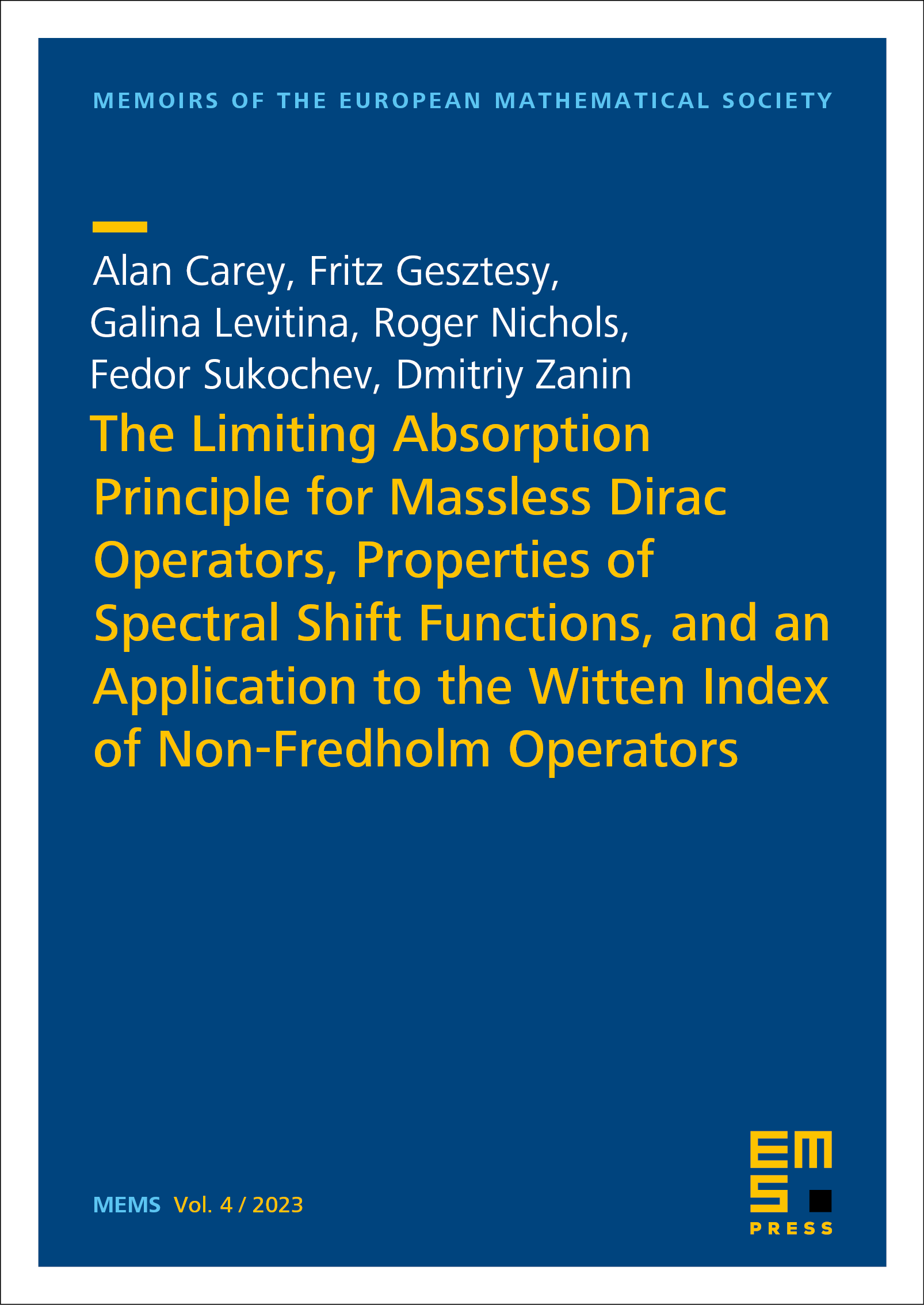The Limiting Absorption Principle for Massless Dirac Operators, Properties of Spectral Shift Functions, and an Application to the Witten Index of Non-Fredholm Operators
Alan Carey
Australian National University, Canberra; and University of Wollongong, AustraliaFritz Gesztesy
Baylor University, Waco, USAGalina Levitina
Australian National University, Canberra, AustraliaRoger Nichols
The University of Tennessee at Chattanooga, USADmitriy Zanin
University of New South Wales, Sydney, AustraliaFedor Sukochev
University of New South Wales, Sydney, Australia

This book is published open access.
Applying the theory of strongly smooth operators, we derive a limiting absorption principle (LAP) on any compact interval in for the free massless Dirac operator,
in , , , . We then use this to demonstrate the absence of singular continuous spectrum of interacting massless Dirac operators , where the entries of the (essentially bounded) matrix-valued potential decay like as for some . This includes the special case of electromagnetic potentials decaying at the same rate. In addition, we derive a one-to-one correspondence between embedded eigenvalues of in and the eigenvalue of the (normal boundary values of the) Birman–Schwinger-type operator
Upon expressing as normal boundary values of regularized Fredholm determinants to the real axis, we then prove that in the concrete case , under appropriate hypotheses on (implying the decay of like as ), the associated spectral shift function satisfies , and that the left and right limits at zero, , exist.
This fact is then used to express the resolvent regularized Witten index of the non-Fredholm operator in given by
where
in terms of . Here , , , , and in are generated with the help of the Dirac-type operators and potential matrices , via
in , assuming
In particular, are the asymptotes of the family , , as in the norm resolvent sense. (Here and represent direct integrals of Hilbert spaces and operators.)
Introducing the nonnegative, self-adjoint operators
in , one of the principal results proved in this manuscript expresses the resolvent regularized Witten index of in terms of spectral shift functions via
Here the notation indicates that is a right Lebesgue point for , and represents the th resolvent regularized Witten index of the densely defined, closed operator in the complex, separable Hilbert space , defined by
whenever the limit exists for some .